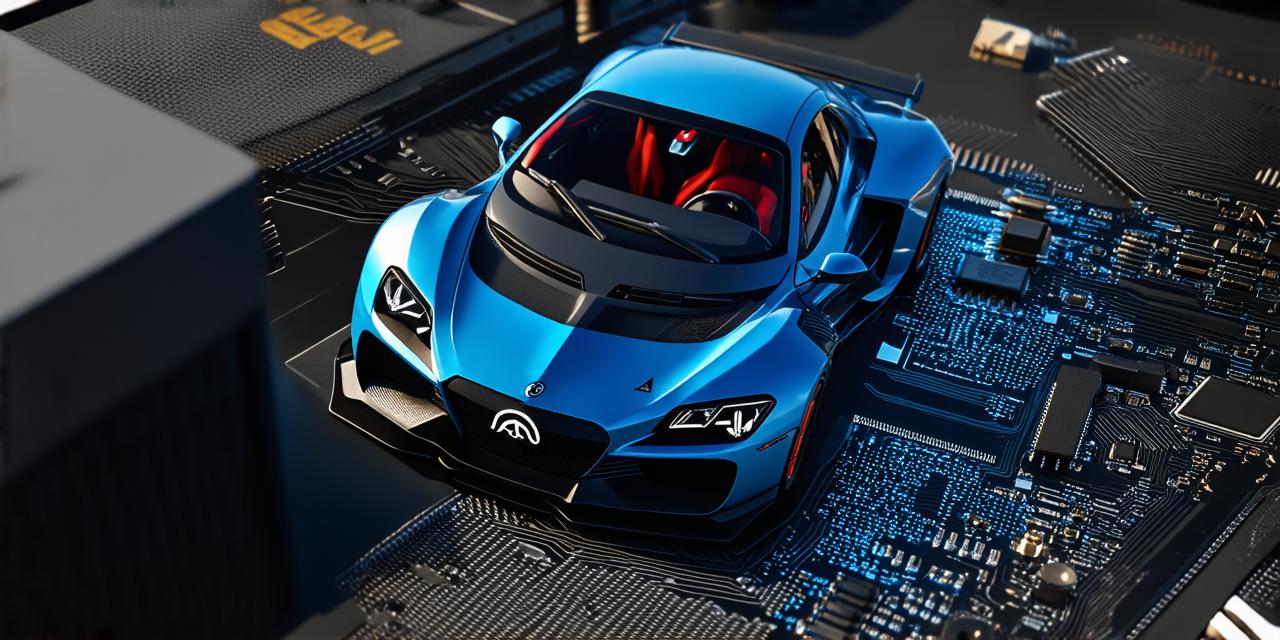When it comes to real-time graphics engines, Unreal Engine is one of the most popular and widely used tools among developers. With its powerful features and advanced technology, Unreal Engine can create stunning visual effects and immersive experiences for users. However, one of the biggest challenges that developers face when using Unreal Engine is optimizing performance on low-end hardware, such as systems with only 8GB RAM.
What is 8GB RAM?
First, let’s define what 8GB RAM means. RAM (Random Access Memory) is a type of computer memory that allows the system to quickly access and store data. The amount of RAM in a system determines how much data can be stored at any given time. For example, an 8GB system has enough RAM to store approximately 64 billion bytes of data.
Unreal Engine Requirements
Now that we have defined what 8GB RAM means, let’s discuss the minimum requirements for running Unreal Engine. According to Epic Games, the official developer of Unreal Engine, the minimum system requirements for running the engine are:
- Processor: Intel Core i5-2500K or AMD FX-8350
- RAM: 8GB DDR3 or better
- Graphics Card: NVIDIA GeForce GTX 660 Ti or AMD Radeon HD 7970 or better
As you can see, the minimum requirements for running Unreal Engine on 8GB RAM are quite high. However, it is still possible to run the engine on this hardware configuration with some optimization techniques.
Optimizing Performance on 8GB RAM
When using Unreal Engine on 8GB RAM, there are a few key things you can do to optimize performance and ensure a smooth user experience. These include:
- Reducing the number of draw calls: A draw call is a request made to the graphics card to render an object or scene. The more draw calls there are, the more work the graphics card has to do, which can slow down performance. To reduce the number of draw calls, you can use techniques such as batching and LOD (Level of Detail) systems.
- Optimizing textures: Textures are images that are used to render objects in Unreal Engine. Large or high-resolution textures can significantly slow down performance on low-end hardware. To optimize textures, you can use techniques such as compression and mip mapping.
- Using lower resolution settings: When running Unreal Engine on 8GB RAM, it is important to use lower resolution settings to reduce the amount of memory needed for rendering. This includes using lower resolution textures and reducing the number of effects used in the scene.
- Disabling unnecessary features: Some features in Unreal Engine may not be necessary for your project and can slow down performance. To improve performance, you should disable any unnecessary features and only use those that are essential to your project.
- Using dedicated hardware: If possible, it is best to use dedicated hardware such as a graphics card with more RAM to run Unreal Engine. This will provide the system with more resources to handle the workload and improve performance.
Real-Life Examples of Projects Successfully Completed on 8GB RAM
Despite the limitations of running Unreal Engine on 8GB RAM, there are many real-life examples of projects that have been successfully completed using this hardware configuration. For example:
- The Binding of Isaac: Rebirth: This popular game was developed using Unreal Engine and runs on 8GB RAM with minimal performance issues. The developers were able to optimize the game by reducing the number of draw calls and using lower resolution settings.
- Unity3D: While Unreal Engine is often used for more advanced projects, Unity3D is another popular game engine that can run on 8GB RAM. Unity3D uses a different rendering pipeline than Unreal Engine, which allows it to be optimized for lower-end hardware.
- Pixar’s “Brave”: This animated movie was developed using Unreal Engine and runs on 8GB RAM with minimal performance issues. The developers were able to optimize the movie by reducing the number of draw calls and using advanced rendering techniques such as global illumination.
FAQs
Here are some frequently asked questions about Unreal Engine and 8GB RAM:
Q: What is the difference between VRAM and RAM?
A: VRAM (Video Random Access Memory) is a type of computer memory that is specifically designed for storing and accessing data related to graphics rendering. RAM (Random Access Memory) is a type of computer memory that allows the system to quickly access and store data.
Q: Can I run Unreal Engine on 4GB RAM?
A: While it is technically possible to run Unreal Engine on 4GB RAM, it will not provide a smooth user experience and may cause performance issues. It is recommended that you use at least 8GB RAM when running Unreal Engine for optimal performance.
Q: What is the difference between GPU and CPU?
A: A GPU (Graphics Processing Unit) is a type of computer processor that is specifically designed for handling graphical tasks such as rendering images and animations. A CPU (Central Processing Unit) is a general-purpose processor that handles all types of tasks, including graphical tasks.
Conclusion
In conclusion, while it is possible to run Unreal Engine on 8GB RAM, it is important to optimize performance and use techniques such as reducing the number of draw calls, optimizing textures, using lower resolution settings, disabling unnecessary features, and using dedicated hardware. There are also many real-life examples of projects that have been successfully completed using this hardware configuration. By following these tips and using advanced rendering techniques, developers can create stunning visual effects and immersive experiences on low-end hardware.
